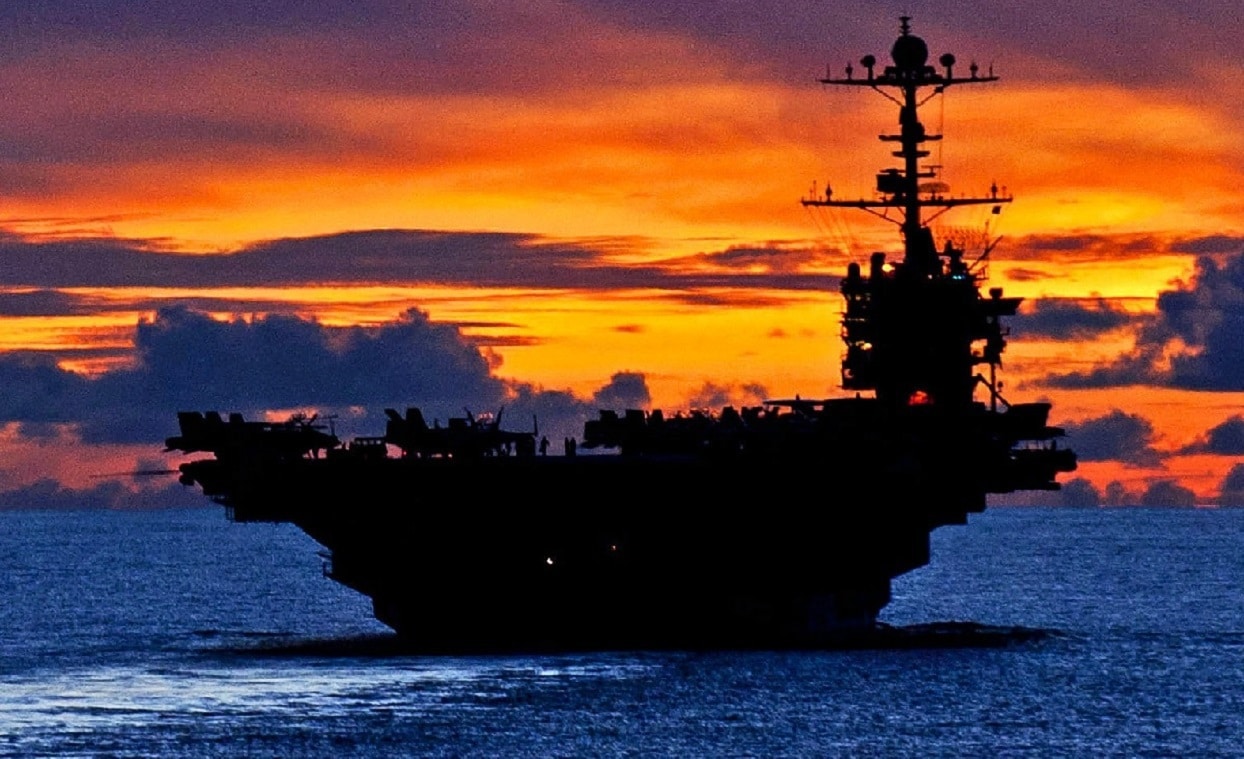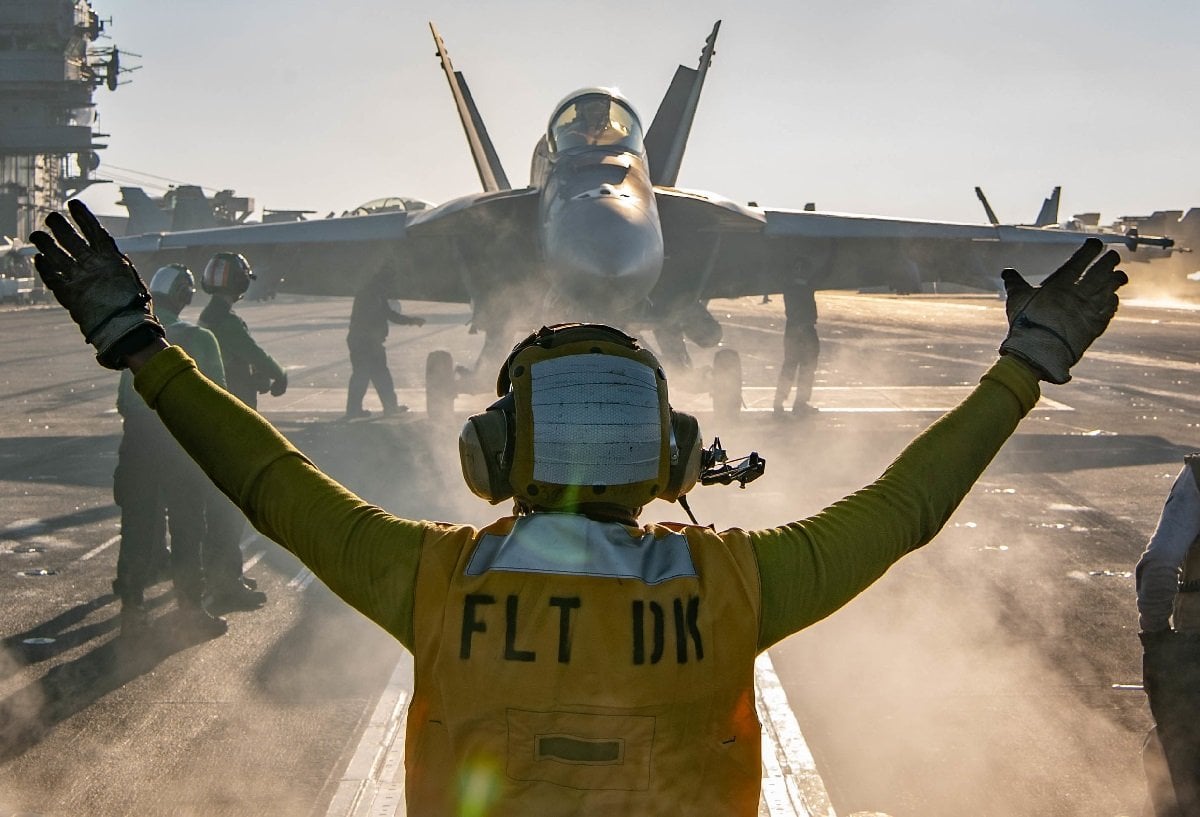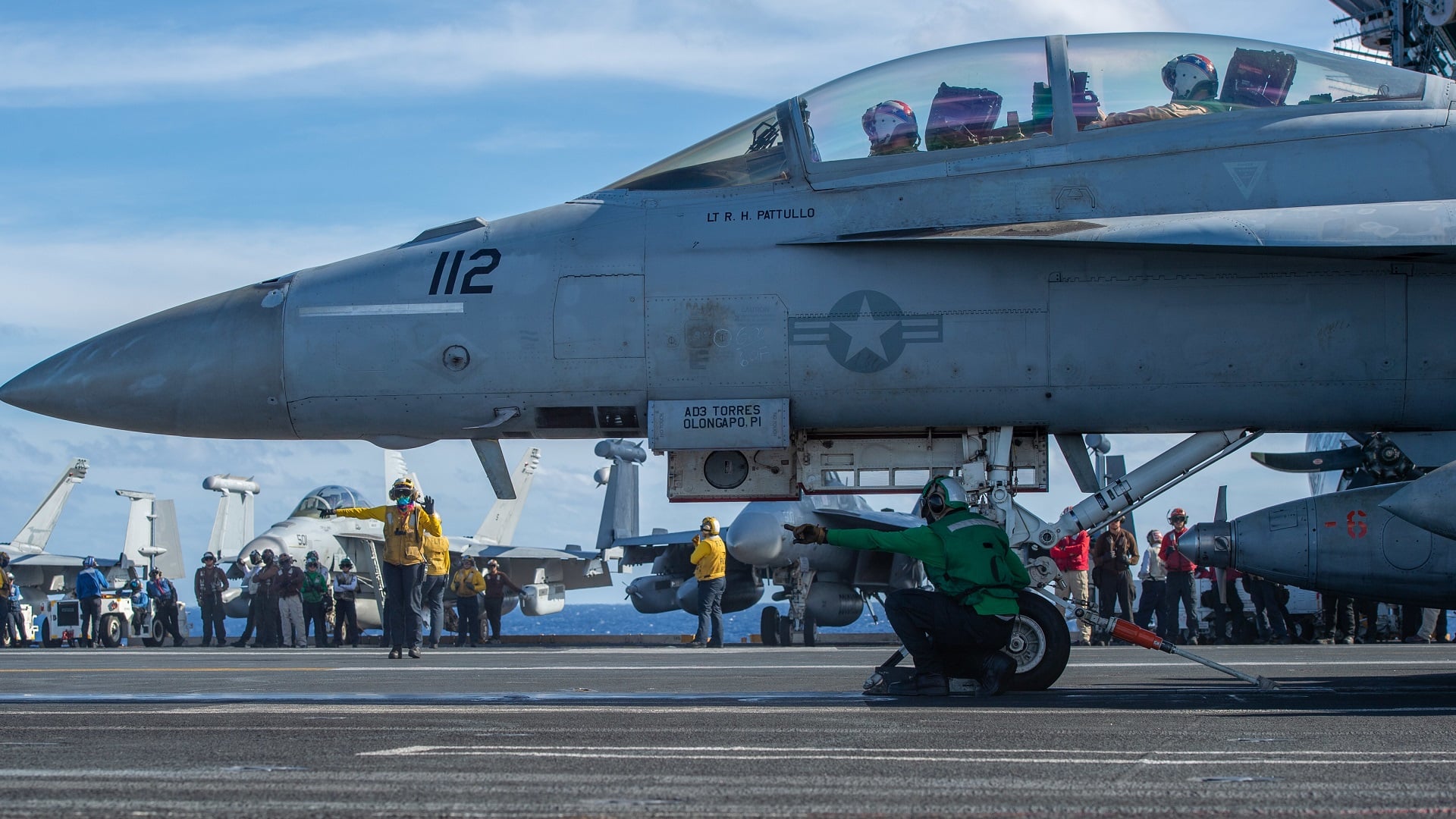Article Summary – The Nimitz-class may be aging, but it remains central to U.S. sea power and deterrence.
-While China builds a larger fleet, upgraded Nimitz carriers still project airpower, protect global trade routes, and underpin forward presence.

American Nimitz class aircraft carrier USS Harry S Truman is pictured during flying operations in the company of HMS Somerset in the Mediterranean. HMS Somerset was perforing anti-submarine duties for the immense vessel at the the time.
-New systems like JPALS improve carrier landings in harsh conditions, while F-35C integration, enhanced networking with Aegis ships, and layered defenses—from SM-6 missiles to SeaRAM and emerging lasers—boost survivability against modern threats.
-The Ford class brings more electrical power and roughly one-third more sorties, but in practice the two classes will operate together: Ford as the high-output flagship, Nimitz as a modernized workhorse.
Don’t Count Nimitz-Class Out: How Legacy Carriers Will Backstop the Ford-Class Fleet
The distinguished and successful combat performance of the Nimitz-class carriers has earned the ships a permanent resting place in the annals of Naval history, as they have projected power, propelled and sustained air attacks, and operated as a powerful “deterrent” and symbol of American power.
These carriers have not only launched successful war campaigns but also safeguarded international waterways for decades. Protecting free commerce and movement on the seas is one of the Navy’s key, yet often lesser-recognized missions, given the large share of international trade that occurs at sea.
This is one key reason why the US Navy conducts many forward operations, placing carriers in critical, high-value areas of great significance to global waterway travel.
The deterrence mission, however, is of course never to be overlooked, particularly in today’s threat environment, wherein China not only threatens Taiwan but operates a larger Navy than the US. Of course, this does not mean it is superior, but the Chinese naval threat is increasingly being taken extremely seriously at the Pentagon.
It is likely one reason why the US Navy recently conducted dual-carrier operations in the Pacific to “scale” the potential for a massive-scale, networked air attack campaign. Improved interoperability, networking, and tactical air-to-surface mission coordination multiply the scale, scope, and operational envelope.
Nimitz Supports Ford
As for the Nimitz, some may wonder how they will compare to the Ford-class once it is more fully operational, yet upgrades to the Nimitz carriers are not to be overlooked. There are several critical areas in which the Nimitz carriers have been adapted to a new, more serious, and changing threat environment.

NORFOLK (Aug. 16, 2019) The Nimitz-class aircraft carriers USS Dwight D. Eisenhower (CVN 69), left, and USS John C. Stennis (CVN 74) moored at Naval station Norfolk. Making port at Naval station Norfolk is a routine activity for aircraft carriers.
For example, they have received cutting-edge GPS-enabled aircraft carrier landing technology called the Joint Precision Approach and Landing System.
While pilots have succeeded in landing in difficult and dangerous conditions for many years, JPALs introduces a new measure of precision for a pilot’s “glide scope” and descent onto a carrier deck. This can be extremely helpful for pilots who “bank: and seek to land in rough sea conditions, high winds, or under enemy fire.
JPALs are also part of a series of modifications that help aircraft carriers accommodate the now-operational F-35C, the first-of-its-kind sea-launched stealth fighter.
Carrier Defenses
Some of the most significant improvements to the Nimitz-class, however, may come in the realm of layered ship defenses.
There are several key reasons for this, the first and potentially most apparent being an increased ability to network with destroyers, cruisers, and other ships in its Carrier Strike Group.
This enables vastly improved protection for carriers, as Aegis-capable destroyers can perform cruise and ballistic missile defense at distances sufficient to alert carriers of incoming threats and, in many cases, intercept them.

Image: Creative Commons.
Carrier-layered defenses also include advanced EW applications, interceptor weapons such as Close-In-Weapons-Systems, and shorter-range offensive and defensive weapons such as SeaRAM.
The other significant surge forward in aircraft carrier survivability and warfighting prowess stems from the rapid adoption of networking technologies. Ships in a Carrier Strike Group, such as destroyers and cruisers, now offer new dimensions of protection to carriers through technologies such as the Aegis 10 Combat System which combines ballistic and cruise missile radar into a single system able to cue fire control and launch defensive interceptors.
An SM-6, for example, can now due to software upgrades track and destroy moving targets by adjusting course in flight. US Navy destroyers are increasingly being armed with scalable lasers able to operate as both optical sensors and weapons to incinerate or disable an enemy aircraft, drone, or incoming missile.
There have also been breakthroughs in electronic warfare (EW), with weapons able to find and “jam” or disable enemy communications or weapons guidance systems.
EW technologies are increasingly capable of deconflicting a cluttered spectrum, “frequency hop” to counter enemy “jamming,” identifying hostile versus friendly electronic signals, or launching a series of difficult-to-detect narrow “pencil beam” electronic beams to disable or jam an enemy system.
There are also upgraded close-in ship defenses increasingly able to track and intercept threats much more quickly, often using AI-enabled advanced algorithms to identify and destroy threats at exponentially greater speeds.
Ford-class Future
As for whether upgraded Nimitz-class carriers will compete with or rival the Ford class, there are several key variables to consider. Nimitz would perform quite well alongside the Ford class. Yet, the largest difference lies in Ford’s 33-percent greater sortie rate, enabled by a larger deck and megawatt generators that provide unprecedented on-board electrical power.

ARABIAN SEA (Jan. 17, 2021) A Sailor directs an F/A-18E Super Hornet from the “Kestrels” of Strike Fighter Squadron (VFA) 137 on the flight deck of the aircraft carrier USS Nimitz (CVN 68) during flight operations. Nimitz, the flagship of Nimitz Carrier Strike Group, is deployed to the U.S. 5th Fleet area of operations to ensure maritime stability and security in the Central Region, connecting the Mediterranean and Pacific through the western Indian Ocean and three critical chokepoints to the free flow of global commerce. (U.S. Navy photo by Mass Communication Specialist 3rd Class Charles DeParlier) 210117-N-JX182-1128.
This can help store energy and power up and sustain power-reliant emerging weapons systems, such as lasers, new EW applications, and radar and fire control systems.
About the Author: Kris Osborn
Kris Osborn is the President of Warrior Maven – Center for Military Modernization. Osborn previously served at the Pentagon as a highly qualified expert in the Office of the Assistant Secretary of the Army—Acquisition, Logistics & Technology. Osborn has also worked as an anchor and on-air military specialist at national TV networks. He has appeared as a guest military expert on Fox News, MSNBC, The Military Channel, and The History Channel. He also has a Masters Degree in Comparative Literature from Columbia University.

